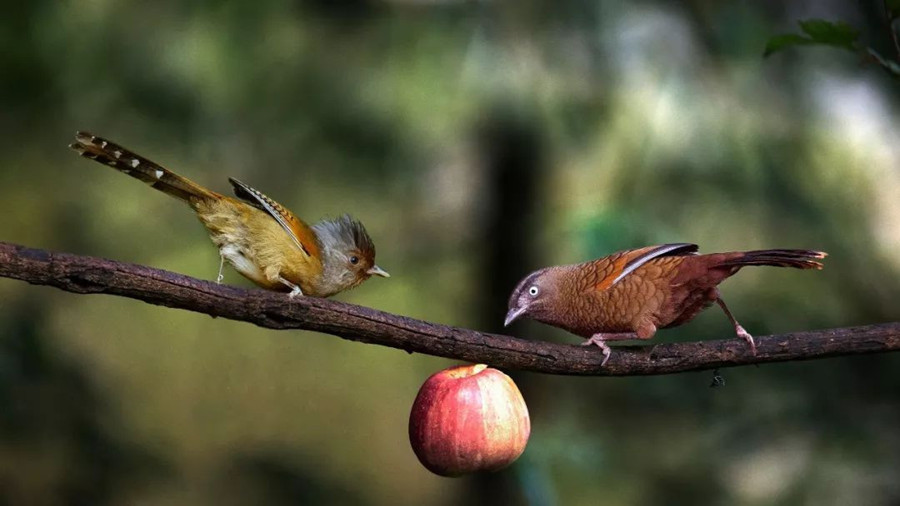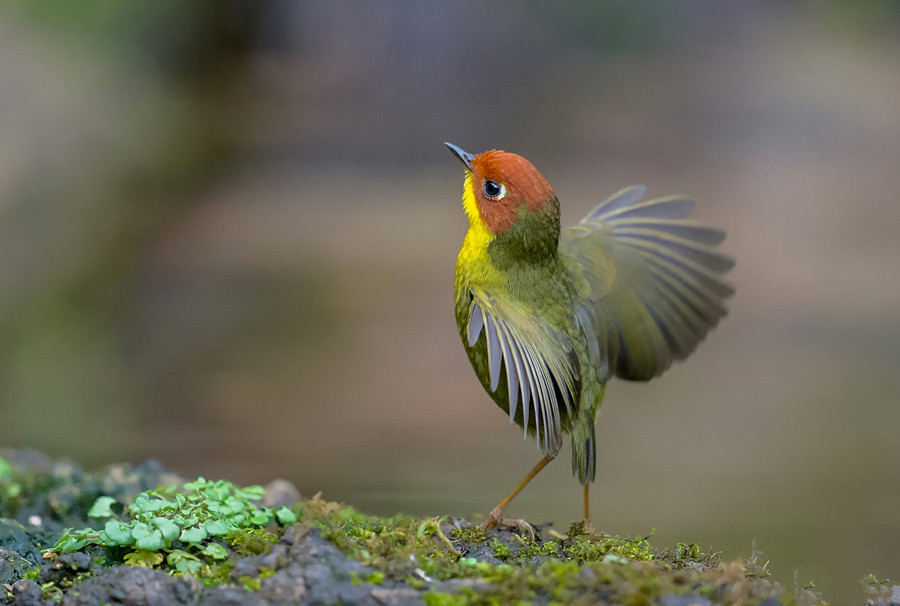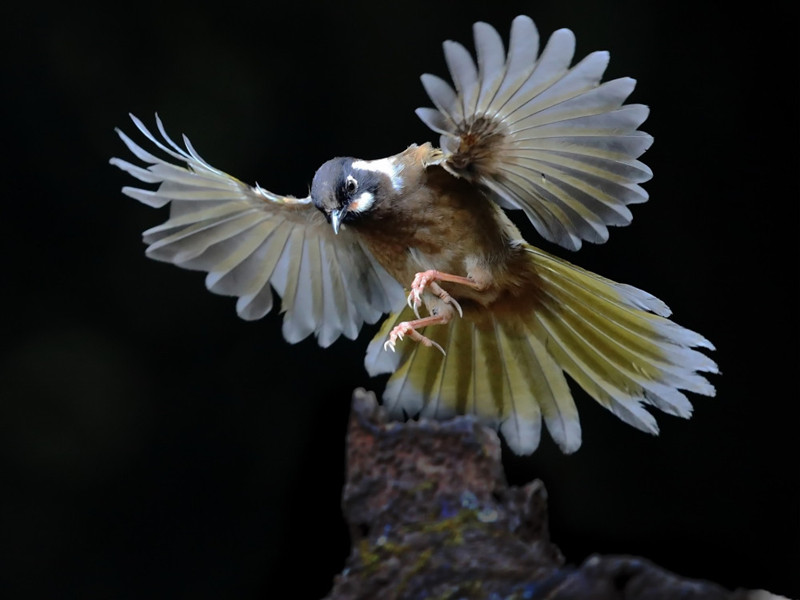
Yunnan Birding Travel Tips of Baihualing in Baoshan
Baihualing in Longyang District, Baoshan, Yunnan, is renowned as a premier birdwatching and bird photography destination in Yunnan Province, known for its exceptional biodiversity within the Gaoligong Mountains. Situated at an altitude of approximately 1420 meters, Baihualing boasts a varied climate ranging from tropical to temperate, uniquely positioned in Yunnan’s “dry-hot river valley” climate zone. This region’s natural environment, with lush mountains, dense forests, and babbling streams, provides excellent habitat for diverse bird species, attracting bird enthusiasts from both China and abroad.
Gaoligong Mountain, acclaimed as the “mother mountain” of the people of Baoshan, Yunnan, is located on the southwestern edge of China. It stands out as one of the most biologically diverse regions globally and a hub of rich avian resources in China. With a concentration of 525 bird species across 19 orders and 58 families, the mountain boasts a diverse and abundant avian population. Its birds, adorned with colorful plumage and producing melodious calls, have made Gaoligong Mountain a focal point for avian research. It is recognized as one of the prime areas in China for ecotourism focused on birdwatching, enjoying high prestige as an international birdwatching destination.
Baihualing is home to over 300 bird species, including many rare and endangered ones. Notable sightings include the rare species like the Scimitar Babbler, along with stars like the Rufous-throated Partridge, Blood Pheasant, Mrs. Gould’s Sunbird, and Fire-tailed Sunbird.
During my visits in March 2023 and 2024, I spent several days photographing birds in Baihualing. In 2023, I captured 63 species, and in 2024, I added 11 new species, totaling 74 species over two years. With the exception of the rare Scimitar Babbler, I managed to photograph most of the birds commonly seen around the local bird ponds in March.
Located in the southwesternmost part of China, Baihualing’s climate and geography differ significantly from northern China, resulting in a diverse avian population rarely seen in the north. For bird photographers from the north, many of the birds here are entirely new and unfamiliar, presenting both a novel and challenging experience in species identification.
To aid fellow bird enthusiasts, I compiled a photographic guide of the birds I encountered over the past two years in Baihualing. This guide categorizes bird species by family and provides standard photos for easy identification and reference, aimed at enhancing bird knowledge and photographic skills among visitors to Baihualing.
Here is a summary of the bird families encountered:
- 鹎科5种Bulbuls (Pycnonotidae): 5 species
- 鹛科24种Laughingthrushes (Leiothrichidae): 24 species
- 鸫科7种Thrushes (Turdidae): 7 species
- 鸲科5种Old World Flycatchers (Muscicapidae): 5 species
- 鹟科6种Flycatchers (Monarchidae): 6 species
- 柳莺4种Warblers (Sylviidae): 4 species
- 燕雀科朱雀属2种Finches (Fringillidae) – Genus Acanthis: 2 species
- 啄木鸟5种Woodpeckers (Picidae): 5 species
- 其它13种Others: 13 species
This categorization and photographic guide aim to facilitate quick and accurate bird identification for birdwatchers visiting Baihualing, enhancing their experience and knowledge of the region’s avian diversity.
Here are the lists of birds in Baihualing:
- 血雀 – Blood Pheasant
- 剑嘴鹛 – Slaty-backed Flycatcher
- 橙腹叶鹎 – Orange-bellied Leafbird
- 纹背扑蜘鸟 – Spotted Wren-Babbler
- 蓝喉太阳鸟 – Blue-throated Sunbird
- 火尾希鹛 – Fire-tailed Myzornis
- 斑胸钓嘴鹛 – Spot-breasted Scimitar Babbler
- 红耳鹎 – Red-whiskered Bulbul
- 灰翅鸫 – Grey-winged Blackbird
- 橙胸姬鹟 – Orange-flanked Bush Robin
- 灰林鸟 – Grey-headed Canary-Flycatcher
- 黑喉山鹪莺 – Black-throated Accentor
- 褐胁雀鹛 – Rufous-breasted Accentor
- 宝兴歌鸫 – Slaty-backed Nightingale
- 黄颊山雀 – Yellow-cheeked Tit
- 蓝翅希鹛 – Blue-winged Minla
- 锈额斑翅鹛 – Rusty-capped Fulvetta
- 银耳相思鸟 – Silver-eared Mesia
- 紫啸鸫 – Blue Whistling Thrush
- 蓝喉拟啄木鸟 – Blue-throated Barbet
- 黄绿鹎 – Green-backed Tit
- 凤头雀嘴鹎 – Red-billed Leiothrix
- 红头躁鹛 – Red-headed Tropicbird
- 纯色躁鹛 – Plain Prinia
- 大斑鹡鸰 – Large-billed Crow
- 长尾地鸫 – Long-tailed Thrush
- 栗腹矶鸫 – Chestnut-bellied Rock Thrush
- 小仙鹟 – Little Forktail
- 黑头奇鹛 – Black-headed Sibia
- 大仙鹟 – Large Niltava
- 灰卷尾 – Grey Bushchat
- 丽色奇鹛 – Beautiful Sibia
- 树鹨 – Tree Pipit
- 棕胸竹鸡 – Red-breasted Partridge
- 黑胸鸫 – Black-breasted Thrush
- 黑背鸫 – Black-backed Thrush
- 黄颈凤鹛 – Orange-headed Thrush
- 红翅薮鹛 – Red-winged Laughingthrush
- 赤脸薮鹛 – Red-faced Laughingthrush
- 蓝眉林鸲 – Blue-capped Rock Thrush
- 金色林鸲 – Golden Bush Robin
- 台湾雀鹛 – Taiwan Barwing
- 皇冠啄木鸟 – Black-crowned Barwing
- 酒红朱雀 – Vinous-throated Parrotbill
- 灰头绿啄木鸟 – Grey-headed Woodpecker
- 棕颈钩嘴鹛 – Streak-throated Barwing
- 纵纹绿鹎 – Stripe-throated Yuhina
- 灰背鸫 – Grey-backed Thrush
- 灰背鸫 雌 – Female Grey-backed Thrush
- 黄頬山雀 – Yellow-cheeked Tit
- 黄颈凤头鸟 – Orange-headed Thrush
- 凤头嘴雀鹎 – Red-billed Leiothrix
- 黄腰柳莺 – Yellow-browed Warbler
- 黑鹎 – Black Bulbul
- 黑喉红臀鹎 – Black-throated Tit
- 黑头穗鹛 – Black-headed Sibia
- 红翅红脸薮鹛 – Red-winged Laughingthrush
- 红头穗鹛 – Red-headed Sibia
- 红嘴蓝雀 – Red-billed Blue Magpie
- 橙胸姫鹟 – Orange-flanked Bush Robin
- 橙胸姫鹟 雌 – Female Orange-flanked Bush Robin
- 赤尾噪鹛 – Rusty-cheeked Scimitar Babbler
- 大拟啄木鸟 – Great Barbet
- 大仙鹟 – Large Niltava
- 淡眉雀鹛 – Pale-billed Parrotbill
- 古铜卷尾 – Rusty-cheeked Scimitar Babbler
- 褐肋雀鹛 – Rusty-cheeked Scimitar Babbler
- 白喉扇尾鹟 – White-throated Fantail
- 白头黑鹎 – Black-headed Black Bulbul
- 斑纹杜鹃 – Patterned Thrush
- 伯劳 – Shrike
- 白喉矶鸫 – White-throated Rock Thrush
In Baishanling, Yunnan Province, there are two main methods of bird photography: pure “wild shooting” and “pond shooting.”
- Wild Shooting:
- This approach, favored by bird enthusiasts adhering to the “laws of nature,” involves entering the forest either independently or guided by local bird experts to search for and photograph birds. Due to its challenging process, uncertain outcomes, and time-consuming nature, it is not widely accepted among most bird enthusiasts and remains a niche practice.
- Pond Shooting:
- In contrast, pond shooting takes place at ponds constructed by local farmers. These ponds typically contain small water bodies and bird feed, attracting wild birds for easy capture. This method is popular among bird photographers for its convenience and higher probability of successful captures.
Baishanling is now nationally renowned, attracting bird enthusiasts from across China, which has led to high demand for pond resources. Without prior reservation, accessing these ponds can be challenging. It is advised to book in advance and specify the desired pond before departure. A birdwatching association has been established here to standardize birdwatching services and prices, ensuring fair practices without exploitation. Generally, the daily package including three meals costs 80 RMB per person, with an additional 5 RMB per person for meal delivery to the ponds or individual meal orders. Accommodation costs 100 RMB per standard room and 120 RMB for larger rooms. Local transportation up the mountain costs 50 RMB per trip, shared among passengers. Birdwatching fees at the ponds are 70 RMB per person per day, with no half-day tickets available. If switching ponds midway, an additional 70 RMB fee applies. There are no guiding fees for pond shooting, but for wild shooting, additional fees for bird guides and transportation are required. Special bird species like blood pheasants and owls incur separate charges, with a fee of 100 RMB if successfully photographed and no charge if not.
Mr. Hou, the owner of the most famous bird pond in Baishanling, is widely respected in the birdwatching community. Due to high demand, reservations are essential to secure accommodations and arrange access to his pond for photography. Otherwise, alternative arrangements, such as staying with local hosts like Mr. Zhang at Pond 32 or dining with renowned hosts like Mr. Liu, may be necessary. Overall, Baishanling in Baoshan City, Yunnan Province, is an ideal destination for birdwatching and photography. It offers beautiful natural surroundings and abundant bird resources, providing endless creative inspiration for photography enthusiasts. Here, you can closely observe the daily habits of rare bird species and capture many beautiful moments, making it highly recommended. While enjoying the pleasures of bird photography, it’s crucial to respect nature and wildlife, collectively preserving this ecological treasure.
Baihualng Scenic Area百花岭景区
Baihualng Scenic Area is the earliest established birdwatching base in Gaoligong Mountain. Departing from Longyang District, Baoshan City, pass through Mangkuan Township’s administrative center and continue approximately 35 kilometers towards Baoshan. Due to its well-preserved natural environment, rich biodiversity, and complex avian fauna, the area has recorded a total of 343 bird species to date, belonging to 18 orders, 52 families, and an additional 4 subfamilies. This bird count accounts for approximately 43.3% of Yunnan Province’s recorded bird species, including 5 species under national first-level protection and 33 under second-level protection. As such, 百花岭 is renowned as the “Golden Triangle of Birdwatching in China” and the “Five-Star Sacred Land for Birding Enthusiasts.”
Origin of the Bird Ponds
In 2009, while following a local bird guide for wildlife photography, an out-of-province photographer discovered a broken irrigation pipe in the village, causing water to spill and form a small pond under the pipe. Surprisingly, this makeshift pond attracted numerous birds for bathing and drinking. This scene was noticed by a group of photography enthusiasts who then camped near this water spot for over a month. Subsequently, local villagers began constructing small ponds, each ranging from around one square meter in size, scattered across different villagers’ mountainous forests, numbered from 1 to 36. Each bird pond features a unique “star bird,” such as the Green-backed Flycatcher at Pond 1, Sword-billed Bulbul at Pond 3, Plain Laughingthrush at Pond 8, Spotted Laughingthrush and Grey-winged Blackbird at Pond 15, Hill Partridge at Pond 18, and Short-tailed Robin at Pond 32. Most ponds are situated on steep slopes, camouflaged by makeshift nets set up by villagers to serve as rudimentary hideouts for photography. Bird enthusiasts must purchase tickets in advance to secure their spot.
Best Birdwatching Season
From October to May the following year. East slope: 7:00-11:00 AM and 5:00-8:00 PM; West slope: 8:00 AM-12:00 PM and 5:00-8:00 PM. Specifically, for observing Blood Pheasants: from January to March annually, typically seen on clear days between 8:00 AM to 11:30 AM, with different poses visible on both sides of the Chunxianggou Waterfall.
Birdwatching Route Recommendations
- Gangdang—Baihualing—Jinchang River
- Birdwatching Duration: 2-3 days
- Species Observable: Over 150 bird species
- Baihualing—Zhaigongfang—Linjiapu
- Birdwatching Duration: 3-5 days
- Species Observable: Over 200 bird species
- Baoshan—Nujiang Gorge—Baihualing—Da Haoping—Tengchong—Datang—Zizhong—Gaoligong Mountain Nature Reserve—Baoshan
- Birdwatching Duration: 9-11 days
- Species Observable: Over 300 bird species
- Baoshan—Nujiang Gorge—Baihualing—Gaoligong Mountain Nature Reserve—Datang—Zizhong—Tengchong—Longling—Xiaoheishan—Jiangzhongshan—Hongqiao Bridge—Baoshan
- Birdwatching Duration: 10-12 days
- Species Observable: Over 350 bird species
- Baoshan—Nujiang Gorge—Baihualing—Gaoligong Mountain Nature Reserve—Datang—Zizhong—Tengchong—Yingjiang—Ruili—Mangshi
- Birdwatching Duration: 14-16 days
- Species Observable: Over 400 bird species
Transportation and Accommodation
- Baihualing enjoys spring-like weather year-round, with prime birdwatching from October to March.
- For self-driving, from Baoshan, it’s about a two-hour drive to Baihualing after reaching Tengchong via the Hangrui Expressway. Alternatively, bird guides can arrange airport transfers.
- Driving Route: Take the Hangrui Expressway from Baoshan towards Tengchong, exit at Lujiang onto Provincial Highway 230 (notable landmarks: Saimaba, Mangshi Zhai, Conggang Village), turn right at the provincial road under the highway bridge at Gangdang, continue straight to Baihualing Ecotourism Area, approximately 110 kilometers with good road conditions.
- Independent Travel Route: From Baoshan Bus South Station, take a rural minibus to Mangkuan. At Gangdang, inform the ticket seller you’re heading to Baihualing. The journey takes about 2.5 hours, where you can notify the guesthouse owner to pick you up along the way.
- During the photography session, bird pond hosts assist with lunch arrangements, allowing birdwatchers to focus solely on capturing photos while leaving other logistics to the “bird pond hosts.”
Gaoli Gongshan Mountain and Baihualing Birding Tour
1️⃣️ Plane ✈️: Charter from Baoshan Airport to Baihualing ¥500 one way.
2️⃣️ High-speed train ?: First to Kunming, then Kunming to Baoshan Station (over 3 hours).
For transportation from Baoshan Station to Baihualing, contact Baihualing pond hosts before traveling. Additionally, after checking in at Baihualing, separate fees apply for transport to bird ponds or lunch delivery at noon.

 7 Days GolfingTour
7 Days GolfingTour
 8 Days Group Tour
8 Days Group Tour
 8 Days Yunnan Tour
8 Days Yunnan Tour
 7 Days Shangri La Hiking
7 Days Shangri La Hiking
 11 Days Yunnan Tour
11 Days Yunnan Tour
 6 Days Yuanyang Terraces
6 Days Yuanyang Terraces
 11 Days Yunnan Tour
11 Days Yunnan Tour
 8 Days South Yunnan
8 Days South Yunnan
 7 Days Tea Tour
7 Days Tea Tour
 8 Days Muslim Tour
8 Days Muslim Tour
 12 Days Self-Driving
12 Days Self-Driving
 4 Days Haba Climbing
4 Days Haba Climbing
 Tiger Leaping Gorge
Tiger Leaping Gorge
 Stone Forest
Stone Forest
 Yunnan-Tibet
Yunnan-Tibet
 Hani Rice Terraces
Hani Rice Terraces
 Kunming
Kunming
 Lijiang
Lijiang
 Shangri-la
Shangri-la
 Dali
Dali
 XishuangBanna
XishuangBanna
 Honghe
Honghe
 Kunming
Kunming
 Lijiang
Lijiang
 Shangri-la
Shangri-la
 Yuanyang Rice Terraces
Yuanyang Rice Terraces
 Nujiang
Nujiang
 XishuangBanna
XishuangBanna
 Spring City Golf
Spring City Golf
 Snow Mountain Golf
Snow Mountain Golf
 Stone Mountain Golf
Stone Mountain Golf
















